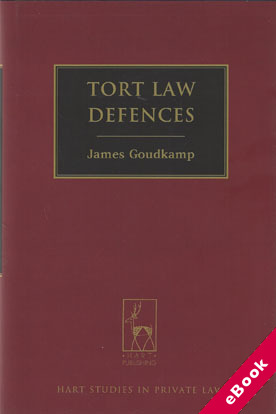
The device(s) you use to access the eBook content must be authorized with an Adobe ID before you download the product otherwise it will fail to register correctly.
For further information see https://www.wildy.com/ebook-formats
Once the order is confirmed an automated e-mail will be sent to you to allow you to download the eBook.
All eBooks are supplied firm sale and cannot be returned. If you believe there is a fault with your eBook then contact us on ebooks@wildy.com and we will help in resolving the issue. This does not affect your statutory rights.
The law of torts recognises many defences to liability. While some of these defences have been explored in detail, scant attention has been given to the theoretical foundations of defences generally. In particular, no serious attempt has been made to explain how defences relate to each other or to the torts to which they pertain.
The goal of this book is to reduce the size of this substantial gap in our understanding of tort law. The principal way in which it attempts to do so is by developing a taxonomy of defences. It argues that all defences should be sorted into the following three categories: (1) absent element defences; (2) justification defences; and (3) public policy defences.
Absent element defences are denials by the defendant of one or more of the elements of the tort in which the claimant sues. Justification defences are defences that are available where the defendant acted reasonably in committing a tort. Public policy defences are defences that relieve the defendant of liability even though he committed a tort without justification. The book shows that much can be learned about a given defence (as well as defences in general) from the way in which they are classified within this system.